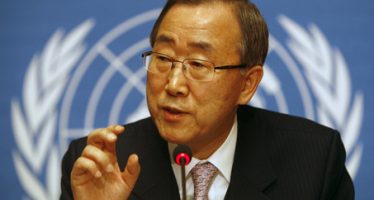Business in Times of Corona: Trillions mobilised to Prop Up Economies
 There seems to be no upper limit to the volume of funds that governments can deploy to keep the fires burning. As the US administration mulls a whopping $1.2 trillion stimulus package, the European Central Bank (ECB) on Wednesday surprised markets with an additional €750 billion for its asset purchase programme. ECB-president Christine Lagarde bluntly stated that there is no upper limit to the financial firepower of the bank. She echoed the bold assurances given earlier in the week by the finance ministers of Germany and The Netherlands who also reminded markets and concerned citizens that their reserves are practically inexhaustible.
There seems to be no upper limit to the volume of funds that governments can deploy to keep the fires burning. As the US administration mulls a whopping $1.2 trillion stimulus package, the European Central Bank (ECB) on Wednesday surprised markets with an additional €750 billion for its asset purchase programme. ECB-president Christine Lagarde bluntly stated that there is no upper limit to the financial firepower of the bank. She echoed the bold assurances given earlier in the week by the finance ministers of Germany and The Netherlands who also reminded markets and concerned citizens that their reserves are practically inexhaustible.
Ms Lagarde’s had some catching up to do after her disappointingly feeble presentation last week when the ECB proved the odd one out amongst central banks for its hesitant response to the rapidly unfolding corona crisis. With the €750 billion now injected into a hastily erected Pandemic Emergency Purchase Programme, the bank aims to regain the initiative – and help cash-strapped Italy, Spain, and Greece in the process.
Markets initially responded with cautious optimism to the measure only to lose their early gains as the day progressed. This has become a trend: markets veer up momentarily as ever-larger rescue packages are unveiled only to fall prey to bears running amok. The dire reality, it would seem, remains priceless for now. However, in due time an equilibrium must be reached at which bargain hunters step in to put a floor under the market. At least that is what conventional wisdom says.
The billions and trillions now being thrown about like confetti are added to the already outsized pile of debt that the world carries. Collectively, governments, corporates, and private individuals owe a staggering $255 trillion to each other – roughly three times the size of global GDP. Stacked in $1-dollar notes, the resulting pile would reach the moon 71 times over. Who calculates such absurdisms? In light of this, to talk of a ‘mountain of debt’ is probably as misguided as is calling the Atlantic a ‘pond’.
In any case, that global stack of debt grew by about 40 percent in height since the banking crisis of 2008. In the US, the Federal Reserve did not at all manage to follow through on the intention to clear its balance sheet of the $4.5 trillion in assets the system acquired during and after the Great Recession. The European Central Bank never even tried to streamline its balance sheet and instead kept adding to it.
The US national debt now equals about 103 percent of GDP and is set to rise to 149 percent by 2049. President Donald Trump is not impressed, much less awed, by this. In a CBS interview he declared himself ‘King of Debt’ and said that he owed his fortune to that: “Nobody understands debt better than I do.”
The United States is by no means exceptional. In the UK, the national debt rose from 38 percent of GDP in 2005 to 84 percent now. That did not stop Chancellor of the Exchequer Rishi Sunak from extending £330 billion in state-backed guarantees to businesses affected by the corona scare. During his announcement, Chancellor Sunak repeated no less than five times the ‘whatever-it-takes’ phrase which now has become rather stale.
Thanks to vast QE programmes, corporate debt has piled up as well. Late last year, Chairman Jeremy Powell of the US Federal Reserve noted that for the past ten years, businesses have been taking on debt at a rate that eclipses their growth. However, Mr Powell also said that a healthy economy should have no trouble sustaining that level of debt.
However, as a result of the untold trillions shaved off global market capitalisation by the contagion, the assets bought up by central banks all of a sudden seem much less solid than before. This need not necessarily constitute a problem in the short to medium term: Behold the wonderful world of fractional-reserve banking with fiat currency.
Banks, including central banks, create money ‘ex nihilo’ – quite literally: out of nothing – which then appears perfectly balanced on their ledger. A liability is created and its component part, the cash, is duly credited to the taker’s account. Thus, a debt creates money whilst repayment destroys it. Fiat money, intrinsically without real value and not fully backed by gold or another tangible commodity, works wonderfully well as long as markets trust the issuer’s ability and willingness to guarantee its mutually agreed-upon value.
Inflation is the prime gauge of market confidence in fiat money. Most experts agree that a little bit inflation, say two percent annually, encourages economic growth since it offers an incentive to spend today rather than tomorrow when goods and services will likely be more expensive. Deflation, when money actually gains value over time, has the opposite effect and reduces economic turnover: Why buy today when prices will be lower tomorrow?
In both Europe and the United States, inflation rates are currently at or near historical lows. They have been pushed down by lacklustre growth and the resulting weak demand – so much so that the unprecedented wholesale injection of fiat money into the economy has failed to cause any noticeable effect on inflation.
In other words: No matter how much money is created out of nothing to stimulate demand, prices remain stable. In normal times – which we are not now living – demand should have skyrocketed and pushed price indices upwards. That is not happening because market confidence is at a depressing low as well: Businesses and consumers do not believe that better times lie ahead. Most corporations are therefore not investing and use their QE-windfall mostly to jack up dividend pay-outs and buy back stock, regaling shareholders. Consumers also see a glass half full and refuse to embark on a spending splurge, resulting in exceptionally high saving rates. Since interest rates are below, at, or just above zero, a vast pool of inactive cash has been created that is not employed in any meaningful way. The huge stimulus packages now being rolled out to revive near-stagnant economies only adds to that pile.
To deplore that is to miss the point. The cash itself is rather irrelevant: Central banks are only trying to bolster dampened corporate and consumer confidence in order to get the economy on the move – or prevent it from sliding into a depression. However, there is another, probably more effective, way of doing just that.
Interestingly enough, President Trump – the self-proclaimed King of Debt – has a good point when he suggests to simply dole out money directly to all Americans without any further ado, or strings attached. This concept – aka helicopter money – centres on that fact that untold millions of people have barely, or not at all, benefitted from the slow economic recovery that marked the years following the Great Recession.
Memorably called the Jams (just-about-managing) by former UK Prime Minister Theresa May, these people would most likely instantly spend any money disbursed by helicopter – or handed out on a prepaid credit card. By cutting out the middlemen – commercial banks and businesses – an immediate demand-side shockwave can easily be sent through the economy: Money which will then ‘trickle up’ to corporations that may use the almost-free funds disbursed via QE to expand production. In the face of a severe economic downturn triggered by the corona virus, it might be an idea to attack the problem from both sides. As long as inflation stays low, money shouldn’t be an object.
You may have an interest in also reading…
Women’s Brain Project on COVID-19: Sex and Gender Differences Paving the Way for Precision Medicine
On February 10, an executive committee member of the Women’s Brain Project (WBP) travelled to China, taking medical aid and
World Exchanges Agree Enhanced Sustainability Guidance
Guidance is culmination of year-long project by WFE’s Sustainability Working Group WFE sets out ‘material ESG metrics’ to include in
The Euro Crisis Should Distract on Rio+20 Agreement
Much of the world’s attention has been focused on the Euro crisis but this should not be allowed to distract


















































































